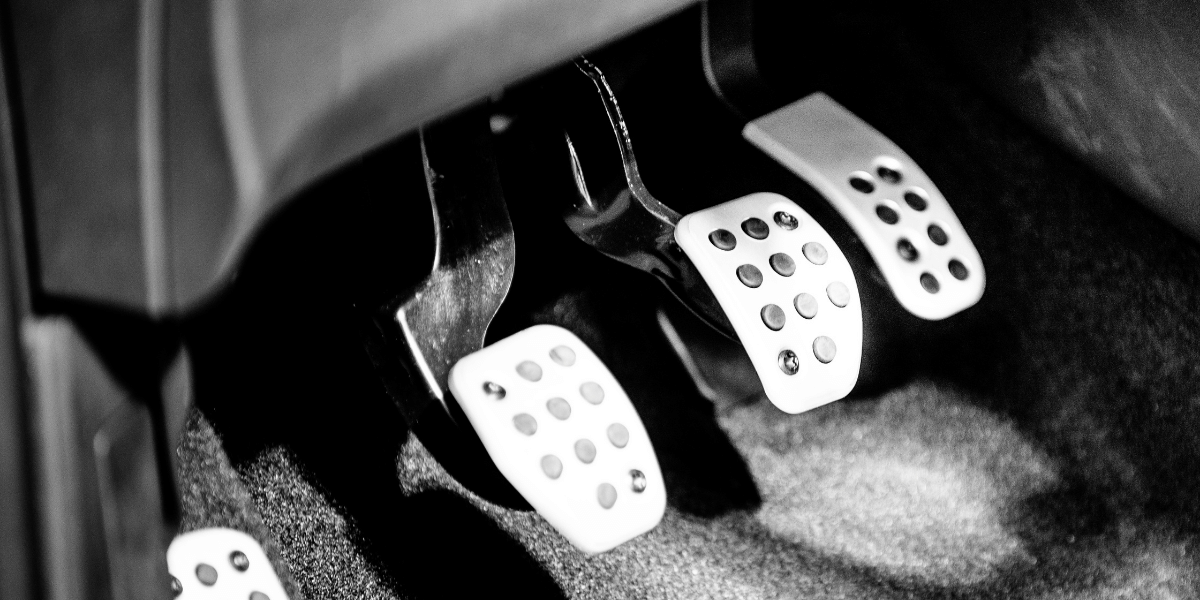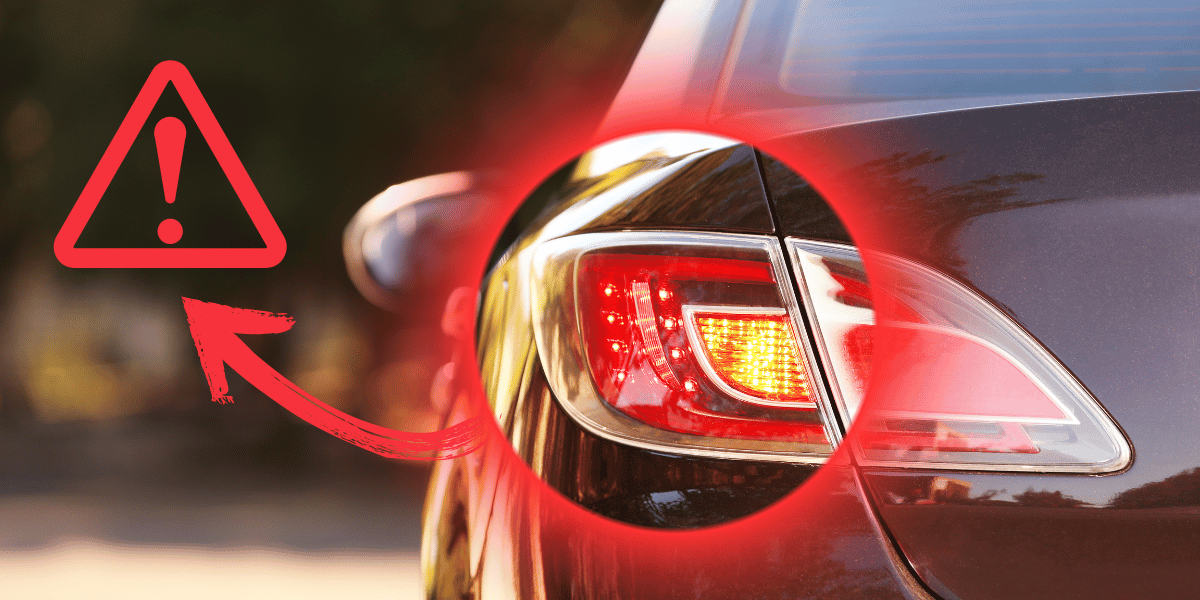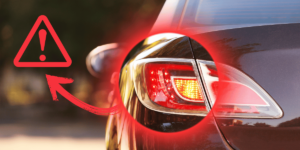Antifreeze is an important part of your car’s cooling system because it keeps the engine running smoothly and prevents it from getting too hot. You may have heard of red and green antifreeze, but can you mix them? We’ll talk about automotive antifreeze in this helpful blog post. We’ll talk about what red and green antifreeze are, what happens when you mix them, and answer some frequently asked questions to help you make the best decisions for your car.
What is antifreeze? Is coolant also known as antifreeze?
Antifreeze, which is also called coolant, is a carefully made liquid that is used in the cooling systems of cars and other vehicles. The main job of this part is to keep the engine’s temperature stable so that it doesn’t get too hot and works at its best. Antifreeze is usually a mix of chemicals and water, with ethylene glycol or propylene glycol being the main ingredient.
What are the different types of antifreeze?
Antifreeze comes in a number of different types, each with its own unique recipe and properties. Choosing the right type of antifreeze for your car often depends on who made it and what the cooling system needs. Most people use one of these types of antifreeze:
- Based on Ethylene Glycol: Ethylene glycol is the most common and well-known base for antifreeze. It does a great job of keeping out freezing temperatures and moving heat around. Antifreeze that is based on ethylene glycol is usually green and is used in older cars.
- Antifreeze Without Nitrite: Antifreeze without nitrite is made for heavy-duty uses like diesel engines. The fact that it doesn’t contain nitrites makes it a popular choice for big cars and other heavy machinery.
- Propylene Glycol-Based Antifreeze: Propylene glycol is an alternative to ethylene glycol that is known for being less toxic. This makes it a better choice, especially in places where pets or people might accidentally eat or touch it. RVs, boats, and some environmentally friendly car uses use it a lot.
- Antifreeze Without Phosphates or Silicates: Some antifreeze manufacturers make their goods without phosphates or silicates, which can damage some engine parts. The goal of these formulas is to protect for a long time while also lowering the risk of rust and deposits.
- Dex-Cool (red or orange) Antifreeze: Dex-Cool is a type of antifreeze that is known for lasting longer and working well with aluminum parts. To most people, it’s orange or red. Modern General Motors (GM) cars and some cars from other companies use Dex-Cool a lot. It’s important to follow the directions that come with Dex-Cool.
- Hybrid Antifreeze: Labelled as “hybrid” or “universal,” some antifreeze products are good for both cars and trucks. The recipe for these makes them work with both ethylene glycol- and propylene glycol-based antifreeze. You may be able to use them in more cars, but it’s very important to do what the manufacturer says.
- Organic Acid Technology (OAT) and Hybrid Organic Acid Technology (HOAT) Antifreeze: These improved types of antifreeze stop corrosion with organic acids. Most European and Asian cars use OAT coolant. HOAT antifreeze is a mix of OAT and other common additives. Longer service intervals and compatibility with a wide range of materials are features of both kinds.
Keep in mind that mixing different kinds of antifreeze can cause problems with how they work together, which could make the cooling system less effective or even damage it. Always check your owner’s manual or talk to an experienced mechanic to find out what kind of antifreeze is best for your car. Also, make sure you follow the manufacturer’s advice on how often to do maintenance and replace the coolant.
Why is it not possible to mix red and green antifreeze?
Mixing green and red antifreeze is usually not a good idea because these two different types of coolant might not work well together. These are the main reasons you shouldn’t mix them:
- Chemical Differences: The chemicals and rust inhibitors in green and red antifreeze are not the same. As rust inhibitors, green antifreeze often has silicates and/or phosphates in it. Red antifreeze, like Dex-Cool, uses organic acid technology (OAT) or hybrid organic acid technology (HOAT). When these different chemical makeup are mixed, they can react in bad ways.
- How Sludge Forms: Green and red antifreeze can sometimes mix to make a thick, gel-like substance. This gunk can build up in your car’s cooling system, like in the radiator, hoses, and engine cooling passageways. This build-up can make it harder for coolant to move, which makes cooling less effective.
- Corrosion and Damage: Because these two types of antifreeze don’t work well together, rust can happen in the cooling system. Corrosion can cause leaks, harm to gaskets and seals, and shorter life spans for many parts, like the radiator and water pump.
What Will Happen If You Put Red and Green Antifreeze Together?
If you mix green and red antifreeze, it can hurt your car’s cooling system and engine in a number of ways:
Mixed green and red antifreeze throws off the chemical balance of both types, which makes cooling less effective. Because of this, the radiator might not be able to keep the temperature just right, which could cause the engine to overheat.
- Rust Issues: When different types of antifreeze don’t work well together, rust can happen in the cooling system. Parts can become weaker and water can leak because of corrosion, which can make the engine overheat and damage it.
- Damage to Gaskets and Seals: When you mix these types of antifreeze, a sludge or gel forms that can hurt gaskets and seals in the engine and cooling system. This could lead to coolant leaks that need expensive fixes.
- Problems with the Pump and Radiator: Sludge can clog the radiator and make the water pump work less well, which are both necessary for good cooling. This can cause the engine to get too hot and possibly damage it.
How to check your antifreeze level and condition?
Do these things to find out how much antifreeze you have and how good it is:
- Let the engine completely cool down: When the engine is hot, the antifreeze is under a lot of pressure, so you should wait until the engine is cool to check the amount or condition.
- Find the tank for cooling: Most of the time, the clear plastic tank that holds the coolant is near the radiator. The sticker says “coolant” or “antifreeze.”
- Check the amount of antifreeze: The amount of antifreeze should be between “full” and “low” on the tank. If the level is low, add a mixture of 50% antifreeze and 50% water to the tank. Make sure you put in the same kind of water when you add more.
- Inspect the antifreeze condition: Check how the antifreeze is doing. The liquid should be clear and not have anything in it. If the antifreeze is cloudy or has particles in it, you need to clean the cooling system and buy new coolant.
You will need an outdoor hose, a bucket, and a funnel to flush the cooling system. Do these things:
- Empty out the coolant: Open the drain valve on the radiator and let the liquid flow into the bucket.
- Flush out the device for cooling: Hook up the outdoor hose to the radiator flush valve and run clean water through the cooling system until the water runs clear.
- Fill up the system for cooling: Close the radiator drain opening and add a mix of 50% antifreeze and 50% water to the cooling system. Make sure to use the same kind of antifreeze that you used to flush the system.
Every two years or 36,000 miles, whichever comes first, you should flush the cooling system and change the antifreeze. This will help keep the cooling system clean and stop rust from happening. If you don’t know how to check or change your antifreeze, you should talk to a professional repair.
When should antifreeze be changed?
How to Replace Antifreeze a step-by-step guide:
- Park your cool engine vehicle on a level surface.
- Collect fresh antifreeze, a drain basin, a funnel, and safety equipment.
- To empty the old coolant, find the radiator drain plug and open it, or remove the lower hose.
- If necessary, flush the cooling system.
- Replace the hose firmly or shut off the drain stopper.
- To the radiator, add fresh antifreeze to the specified amount.
- Run the engine while the heater is on to bleed the air.
- Inspect hoses and connections for leakage.
- Use a recycling centre to properly dispose of old coolant.
- Maintain a record of repairs for future use.
The performance and health of your car depend on regular antifreeze changes.
What indicates trouble in the cooling system?
Here are some common cooling system problems and how to troubleshoot them:
Overheating
Overheating is the most common cooling system problem. It can be caused by a number of things, including:
- Low coolant level
- Clogged radiator
- Faulty thermostat
- Broken water pump
- Leaking cooling system hoses or connections
To troubleshoot overheating, first check the coolant level. If the coolant level is low, add a mixture of 50% antifreeze and 50% water. If the coolant level is full, check the radiator to see if it is clogged. The coolant won’t be able to run properly through a clogged radiator, which can lead to the car getting too hot. In this case, the radiator needs to be either cleaned or rebuilt.
If there are no clogs in the radiator, check the thermostat. If the water doesn’t flow properly through a broken thermostat, the engine can get too hot. If the thermostat is broken, it needs to be changed.
Instead of checking the temperature, you should look at the water pump. If the water pump breaks, the coolant won’t be able to flow properly, which can lead to the engine burning. It is necessary to change the broken water pump.
Also, make sure there are no leaks in the cooling system’s tubes and connections. Fix any leaks or get new hoses and joints if there are any.
Leaks are a problem
Another typical issue with cooling systems is leaks. There are several things that can lead to them, such as:
- Cracked or broken hoses
- Connectors that are loose or worn
- Nose on the radiator cap
- Thermostat or water pump that leaks
To figure out what’s wrong with a leak, look for puddles of coolant under the car or coolant on the hoses and joints. When you find a break, you should either fix it or get a new part.
The Noise
A problem may be indicated by noise from the cooling system. Some common noises from cooling systems are:
- You might hear squealing or whining sounds if your fan belt is slipping or if your water pump isn’t working right.
- If your fan belt is loose or worn out, or if your water pump isn’t working right, it can make this noise.
- If you hear hissing or popping, it could mean that there is a leak in the cooling system.
It is important to have a trained mechanic look at the cooling system if you hear any noise from it.
This is the story of the mixed antifreeze.
Sarah didn’t have much money because she was a single mom. Even though the car she drove was old, she took good care of it. Her car started getting too hot one day. Someone who works on cars told her she needed a new radiator. Sarah didn’t have enough money to buy a new radiator, so she fixed the old one herself. She borrowed a book from the library that told her how to fix car radiators. She was able to fix the radiator herself by following the steps in the book.
Sarah was glad that she fixed the radiator herself and saved money. She knew she needed to clean and refill her coolant, though. Since she didn’t have any cash on hand, she used some green antifreeze that she had saved from an old car. Sarah didn’t know that red and green antifreeze don’t work together. She put the green antifreeze in the cooling system of her car and drove it home. Sarah turned on her car the next morning and drove to work. But her car started to warm again after only a few miles. She stopped on the side of the road and called a tow truck.
The tow truck driver took Sarah’s car to a fixed-up shop. The mechanic told Sarah that she had messed up the radiator by mixing green and red antifreeze. It was time for Sarah to get a new radiator and have her cooling system cleaned and refilled with the right kind of antifreeze.
Sarah felt bad about what she had done. After fixing the radiator herself, she had to pay more to have it fixed again. She had to pay for a new radiator and a tow truck as well.
That day, Sarah learned something important. She found out how important it is to use the right kind of antifreeze in her car. She also learned that about every two years, it’s a good idea to have your cooling system cleaned and filled with new antifreeze.
What is Antifreeze color chart?
With the help of its color, an antifreeze color chart can help you figure out what kind of antifreeze or coolant you have. Manufacturers of antifreeze and coolants often use different colors to make their goods stand out. The color can show what chemicals are in the product and whether it will work with a certain vehicle’s cooling system. Here is an easier-to-read antifreeze color chart:
- Color: Green
Composition: It usually has silicates and/or phosphates in it to stop rusting.
Often found in older cars and some newer ones as well.
If you use orange or red Dex-Cool antifreeze, - Color Orange or red most of the time: As rust inhibitors, it uses either organic acid technology (OAT) or hybrid organic acid technology (HOAT).
Often found in new General Motors (GM) cars and some cars from other companies.
Antifreeze in yellow: - Color Yellow: It has corrosion-preventing hybrid organic acid technology (HOAT) in it.
Used in some cars in Europe and Asia.
Antifreeze in blue: - Color Blue: It usually has organic acid technology (OAT) rust inhibitors in it.
Found in some cars in Asia and Europe.
Purple or Pink? Frozen food: - Pick either pink or purple: It has corrosion-preventing agents made from organic acid technology (OAT) or hybrid organic acid technology (HOAT).
Used in some vehicles; not as popular. - Clear or Colorless Antifreeze: It can be different, but it usually has rust inhibitors in it.
Used sometimes for certain tasks or as a general cooler.
Antifreeze for all: - Universal Antifreeze: People often sell colors as “universal” or “all-makes, all-models.”
Made so that it works with different kinds of antifreeze.
Used in cars where compatibility is very important.
Remember that while this chart can be helpful, you should always check your owner’s manual or talk to a mechanic to find out the exact type of antifreeze that is recommended for your car. Mixing antifreeze types that aren’t compatible can cause problems with the cooling system and could even damage your car. Always follow the manufacturer’s instructions for coolant type and maintenance.
Frequently Asked Questions
Q: Can I use red antifreeze in a vehicle that originally had green antifreeze?
A: Yes, you can switch from green to red antifreeze as long as you thoroughly flush the cooling system to remove any remnants of the green antifreeze.
Q: Can I use a universal antifreeze that claims compatibility with both red and green antifreeze?
A: While universal antifreeze may offer compatibility, it’s best to stick with the type recommended by your vehicle’s manufacturer to ensure optimal performance.
Q: How often should I change my antifreeze?
A: It’s generally recommended to change your antifreeze every 2 to 5 years, depending on the type and brand, or as specified in your vehicle’s owner’s manual.
Q: What are the signs that my cooling system needs attention?
A: Look out for symptoms like overheating, coolant leaks, a sweet-smelling odor, or discolored coolant, which may indicate a problem with your cooling system.
Q: Can I mix different brands of the same type of antifreeze?
A: It’s best to use the same brand of antifreeze throughout the life of your vehicle to avoid compatibility issues.
Q: Can I Mix Different Color Antifreeze?
A: Mixing different color antifreeze, such as green and red, is generally not recommended because they have different chemical formulations. This can lead to problems in your vehicle’s cooling system.
Q: What Should I Do If I Mixed Green and Orange Coolant?
A: If you accidentally mixed green and orange coolant, it’s best to flush your cooling system and replace it with the correct coolant recommended for your vehicle. Mixing can lead to issues like clogs and reduced cooling efficiency.
Q: Is It Okay to Put Green Coolant Instead of Red (or Vice Versa)?
A: Using the wrong color coolant isn’t recommended. Always follow your vehicle manufacturer’s recommendations for the specific type and color of coolant. It’s essential for maintaining the cooling system’s performance.
Q: Can You Mix Universal Coolant with Red Coolant?
A: It’s typically not recommended to mix different types of coolant. Stick with the coolant type specified for your vehicle to ensure compatibility and optimal performance.
Q: How Long Does Blue Antifreeze Last?
A: The longevity of blue antifreeze depends on the brand and formulation. Refer to the product label or your vehicle’s owner’s manual for recommended coolant change intervals.
Q: What Is ELC Coolant?
A: ELC (Extended Life Coolant) is a type of antifreeze known for its extended service life. It often has specific additives and corrosion inhibitors for longevity.
Q: What Color Is CAT ELC Coolant?
A: CAT ELC coolant is usually red or pink in color. It’s commonly used in Caterpillar engines.
Q: Can You Mix Green and Purple Coolant?
A: Mixing green and purple coolant isn’t recommended. Stick with one type of coolant to avoid compatibility issues.
Q: What Color Is Pentofrost Antifreeze?
A: Pentofrost antifreeze comes in various colors, depending on the formulation. Check the product label for the specific color of the Pentofrost coolant you’re using.
Q: Can I Mix Green and Blue Coolant?
A: Mixing green and blue coolant isn’t advisable. Follow the manufacturer’s recommendations for the coolant type your vehicle requires.
Q: Does Autozone Take Used Antifreeze?
A: Autozone and other auto parts stores may offer recycling services for used antifreeze. Contact your local Autozone store to inquire about their specific policies.
Q: What Happens If You Use Full Strength Antifreeze?
A: Using full-strength antifreeze without dilution can reduce its effectiveness in regulating temperature. Always follow the manufacturer’s recommended coolant-to-water ratio.
Q: Are All Antifreeze Compatible?
A: Not all antifreeze types are compatible with each other. It’s crucial to use the coolant type recommended for your vehicle to prevent issues.
Q: Is There a Special Antifreeze for Diesel Engines?
A: Yes, there are specialized antifreeze formulations designed for diesel engines, often with additives to address the unique needs of diesel systems.
Q: What Is the Difference Between Diesel Antifreeze and Gas Antifreeze?
A: Diesel antifreeze may have specific additives to meet the requirements of diesel engines, while gas antifreeze is formulated for gasoline engines.
Q: Can You Mix Yellow and Green Antifreeze?
A: Mixing yellow and green antifreeze is generally not recommended due to potential compatibility issues. Stick with one type recommended for your vehicle.
Q: What Coolant Color Lexus vehicles?
A: The coolant color for Lexus vehicles may vary but is often pink or red, depending on the specific coolant used.
Q: Which brand offers Red Antifreeze?
A: Various brands offer red antifreeze, including Dex-Cool. Be sure to choose a reputable brand and follow the manufacturer’s recommendations for your vehicle.
Conclusion
On the other hand, mixing red and green antifreeze can hurt the cooling system of your car. To keep your engine running well and lasting a long time, you should only use the type of antifreeze that came with your car and not mix different types. To keep your engine going smoothly and avoid expensive repairs, it’s important to do regular maintenance like changing the coolant when it’s due.








